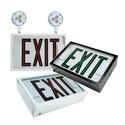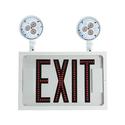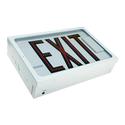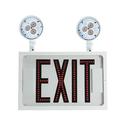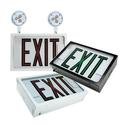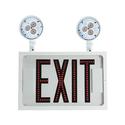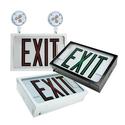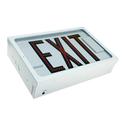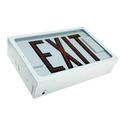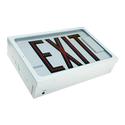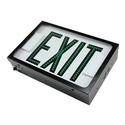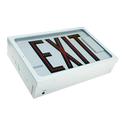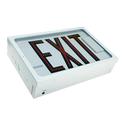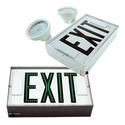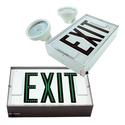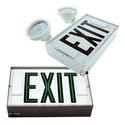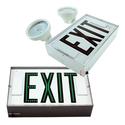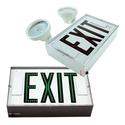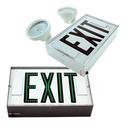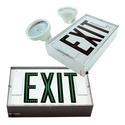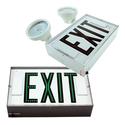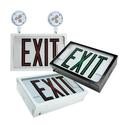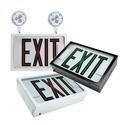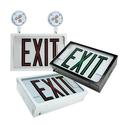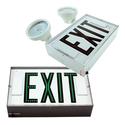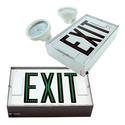
Damp Location Combo Unit Black Ceiling Mount Sealed Lead Acid (SLA) Dual Circuit White Nickel–Metal Hydride (NiMH) Exit Signs
Exit Signs
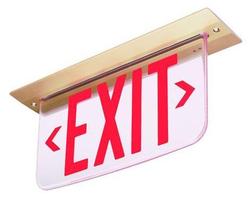 The exit signs category features lighted LED exit signs to comply with building fire codes and insurance standards. These energy-saving, illuminated, long-life LED exit signs use less than 5 watts of power, lowering your energy consumption and saving you money every month. We offer a wide range of designs and features for lighted LED exit signs including: Edge-Lit Exit Sign, Cast Aluminum Exit Sign, Steel Exit Signs, Wet Location Exit Signs and Self Testing Exit Signs.
The exit signs category features lighted LED exit signs to comply with building fire codes and insurance standards. These energy-saving, illuminated, long-life LED exit signs use less than 5 watts of power, lowering your energy consumption and saving you money every month. We offer a wide range of designs and features for lighted LED exit signs including: Edge-Lit Exit Sign, Cast Aluminum Exit Sign, Steel Exit Signs, Wet Location Exit Signs and Self Testing Exit Signs.Combo Unit
These exit signs are also equipped with additional emergency lighting. Check out all of our LED Combo Unit Exit SignsDamp Location
These items can be placed where they may be splashed with water. Typically they are safe to be used outdoors.Dual Circuit
Dual CircuitWhite
Most product that have white housing color are made of a thermoplastic material.Black
Most product that have black housing color are made of a thermoplastic material.Ceiling Mount
Ceiling MountSealed Lead Acid (SLA)
SLA batteries are the most reliable and widely used power source. They can recharge much faster than a flooded lead acid battery, and the calcium added to their plates helps reduce water loss. Sealed lead acid batteries can recycle the gases they produce and can prevent damage to the battery when the charge rate is controlled. These batteries must always be kept in upright positions and protected from leakage.Nickel–Metal Hydride (NiMH)
NiMH batteries can have two to three times the capacity of an equivalent size NiCd, and their energy density approaches that of a lithium-ion cell. Nickel–Metal Hydride batteries are good for high current drain applications because of their low internal resistance.
The disadvantage of NiMH batteries is their high rate of self-discharge. NiMH batteries typically lose 4% of their charge per day of storage. LSD NiMH batteries significantly lower self-discharge, but at the cost of lowering capacity by about 20%.

